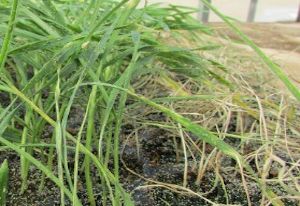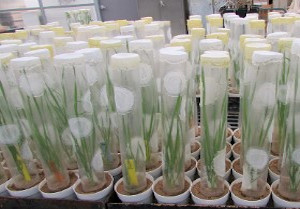By Eric Hamilton
Fields of wheat are so associated with the U.S. that they’re featured in the song America the Beautiful as “amber waves of grain.” But those amber fields face a big threat: Russian wheat aphids.

As their name suggests, these aphids hail from Eurasia. These invasive pests first made their way to Texas in 1986. They’ve since spread to many states and cause billions of dollars of damage to wheat fields. So, crop scientists are desperate to find ways to stop the aphids in their tracks.
“Our major goal is to find genes connected with the resistance to all Russian wheat aphid types in the U.S. and transfer these genes to best wheat varieties,” says Xiangyang Xu. Xu is a scientist with the U.S. Department of Agriculture who studies these aphids. “When farmers grow these aphid-resistant varieties of wheat, they don’t need to worry about the pest.”
Unfortunately for farmers, there are at least five major variations of aphids in the U.S. Each type can survive on wheat with different resistance genes.
Until now, no wheat variety was known that could resist all five types of aphids. That makes genetic resistance the ideal way to protect against the aphids.
Xu and his team tested over a hundred varieties of wheat to find ones that were resistant to the aphids. The tests included wheat from Afghanistan, Denmark, Iran, Switzerland and the U.S.
